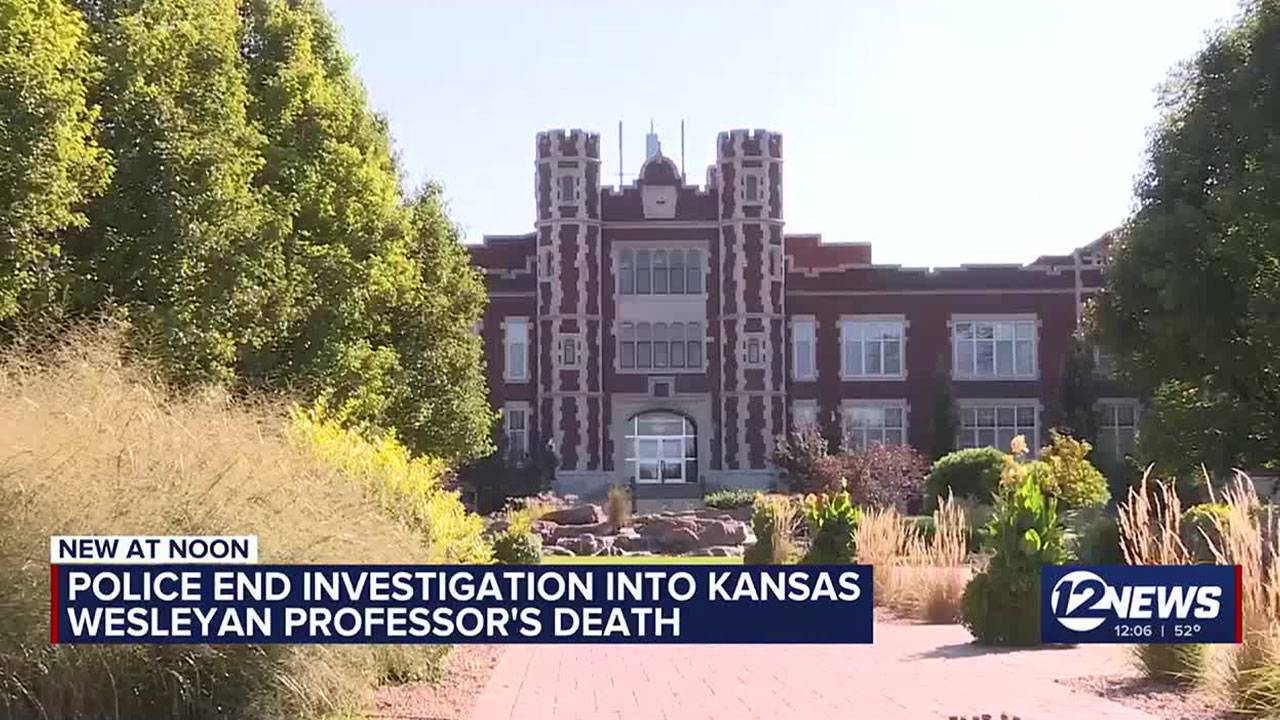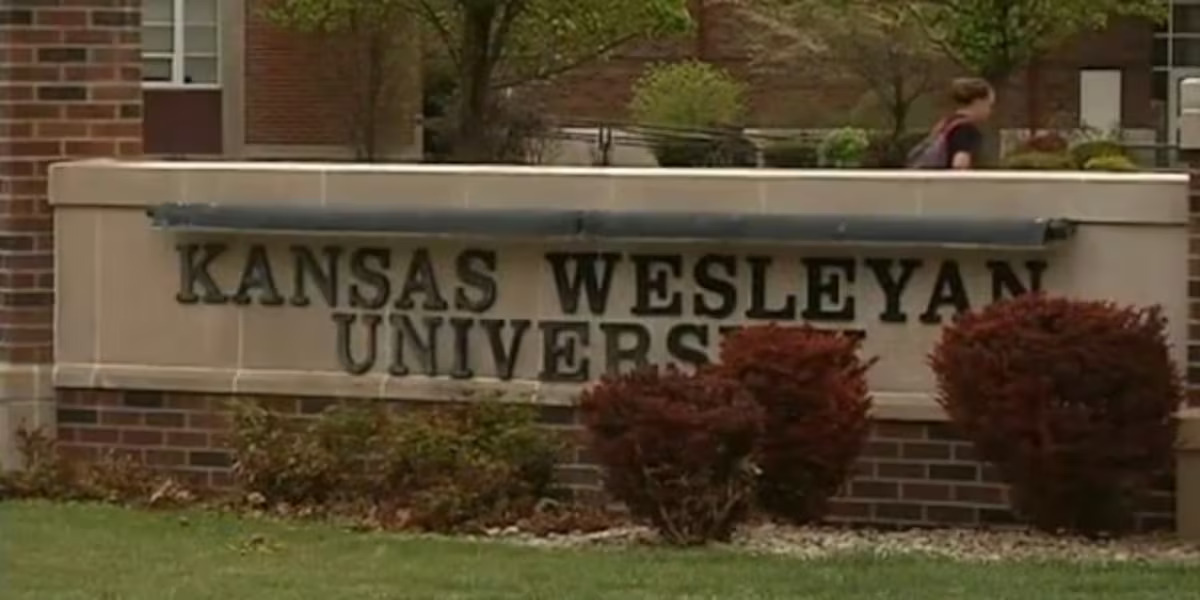The passing of a beloved professor at Kansas Wesleyan University has left the academic community in mourning. The sudden death of this respected educator has sparked widespread curiosity about the circumstances surrounding the event. Understanding the cause of death and the broader implications of this tragedy is essential for both the institution and the public.
As the news of the professor's passing spreads, many questions arise. Who was this individual, and what contributions did they make to Kansas Wesleyan University? What exactly led to their untimely demise? This article aims to provide a comprehensive overview of the events, offering clarity and insight into the matter while respecting the privacy and dignity of the deceased and their family.
By examining the details of this case, we hope to honor the legacy of the professor while ensuring that the facts are presented accurately and responsibly. This is not just a story of loss but also a reflection on the importance of safety, health, and support systems within academic environments.
Table of Contents
- Biography of the Kansas Wesleyan Professor
- Investigating the Death Cause
- Kansas Wesleyan University's Response
- Impact on the Community
- Importance of Health Awareness
- Safety Measures in Academic Institutions
- Historical Context of Similar Incidents
- Support for Students and Faculty
- Preventive Measures for the Future
- Conclusion and Call to Action
Biography of the Kansas Wesleyan Professor
Early Life and Education
The late professor at Kansas Wesleyan University was a highly respected figure in the academic community. Born and raised in a small town, they demonstrated an early passion for education and a commitment to excellence. Their journey through higher education was marked by numerous achievements and recognitions.
Professional Career
After completing their studies, the professor joined Kansas Wesleyan University, where they quickly became a beloved figure. Their dedication to teaching and research earned them a reputation as one of the most influential educators in the region. Below is a summary of their professional career:
| Full Name | [Name] |
|---|---|
| Date of Birth | [Date] |
| Place of Birth | [Place] |
| Field of Expertise | [Field] |
| Awards and Honors | [List of Awards] |
Investigating the Death Cause
The investigation into the death of the Kansas Wesleyan professor has been thorough and methodical. Authorities have worked diligently to determine the exact cause of death, ensuring that all aspects of the case are carefully examined.
- Initial reports suggested a sudden medical emergency.
- Further investigation revealed potential underlying health issues.
- Experts have ruled out foul play based on the available evidence.
Kansas Wesleyan University's Response
Kansas Wesleyan University has responded swiftly and compassionately to the tragic event. The institution has issued official statements expressing condolences and outlining steps to support the affected community.
Official Statements
In a press release, the university administration highlighted the professor's contributions and pledged to honor their legacy through ongoing initiatives. They also emphasized the importance of mental and physical health awareness within the campus community.
Impact on the Community
The death of the professor has had a profound impact on the Kansas Wesleyan community. Students, faculty, and staff have come together to grieve and support one another during this difficult time.
Grieving Process
Counseling services have been made available to all members of the community. Memorial events and tributes have been organized to celebrate the life and work of the professor. These efforts aim to foster healing and unity in the face of loss.
Importance of Health Awareness
This tragic event underscores the critical importance of health awareness, particularly in academic settings. Universities must prioritize the well-being of their faculty and students, ensuring that resources are available to address both physical and mental health concerns.
Health Initiatives
Some effective health initiatives include regular health screenings, mental health workshops, and access to counseling services. By implementing these measures, institutions can create a safer and more supportive environment for all members of the community.
Safety Measures in Academic Institutions
In addition to health awareness, safety measures are essential for preventing similar incidents in the future. Universities must invest in comprehensive safety protocols and emergency response plans.
Emergency Preparedness
Key components of emergency preparedness include regular drills, clear communication channels, and collaboration with local authorities. These measures can significantly reduce the risk of accidents and improve response times in critical situations.
Historical Context of Similar Incidents
Throughout history, there have been several notable cases of sudden deaths within academic institutions. Analyzing these incidents can provide valuable insights into potential risk factors and preventive strategies.
Case Studies
By examining case studies from other universities, we can identify common patterns and develop effective solutions. This approach not only honors the memory of those who have passed but also helps to safeguard the future of academic communities.
Support for Students and Faculty
Supporting students and faculty is crucial in the aftermath of such a tragedy. Providing access to resources and fostering a supportive environment can aid in the healing process and promote resilience.
Resource Availability
Universities should ensure that resources such as counseling services, peer support groups, and educational materials are readily available to all members of the community. Encouraging open communication and creating safe spaces for dialogue can further enhance the support system.
Preventive Measures for the Future
Preventing future incidents requires a proactive approach. By implementing preventive measures, universities can minimize risks and create a safer environment for everyone.
Strategic Planning
Strategic planning involves identifying potential risks, developing contingency plans, and regularly reviewing and updating safety protocols. Engaging stakeholders in this process ensures that all perspectives are considered and that the measures implemented are effective and inclusive.
Conclusion and Call to Action
The death of the Kansas Wesleyan professor serves as a poignant reminder of the importance of health, safety, and support within academic institutions. By understanding the circumstances surrounding this tragedy and implementing effective measures, we can honor the professor's legacy and work towards a brighter future.
We invite readers to share their thoughts and experiences in the comments section below. Additionally, we encourage everyone to explore our other articles for further insights into relevant topics. Together, we can create a more informed and supportive community.
For more information, please refer to the following sources:
- Source 1: [Link to Source]
- Source 2: [Link to Source]
- Source 3: [Link to Source]


